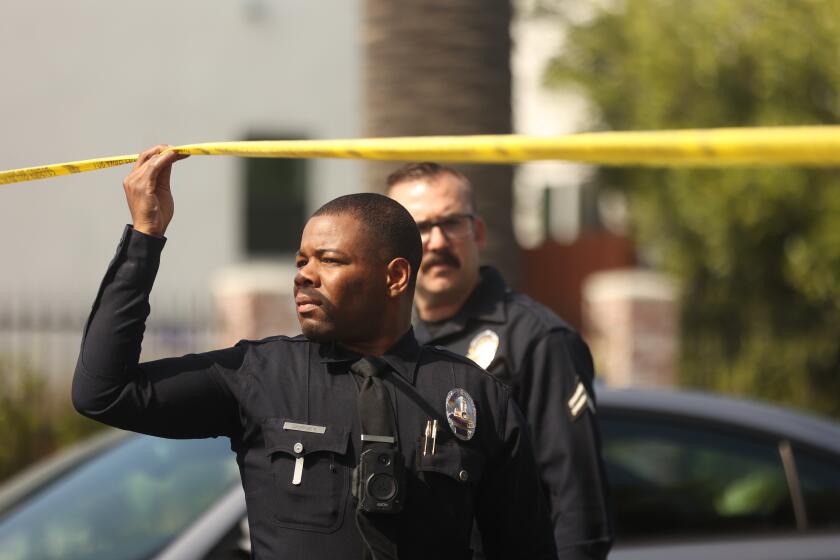Discovery of Spores Halts Library Repair Work : Health: No one has been allowed inside the Janss Road building without a respirator since Sept. 11. Other buildings are being tested.
- Share via
THOUSAND OAKS — City officials suddenly halted construction and pulled crews out of the Thousand Oaks Library last week after a scientific report discovered potentially toxic levels of mold spores in the quake-damaged building.
No one has been allowed inside the building without a respirator since Sept. 11, and all city buildings are being tested for the airborne mold spores, officials said.
Although no illnesses have been linked to the high levels of penicillium mold spores found in the tattered building’s walls, at least half of the library’s 105 employees have complained of general malaise, rashes, bronchial problems and other illnesses for the past several years, according to an official of the city’s employees’ union.
“Employees were constantly ill with bronchial and flu-like symptoms, constant runny noses and sore throats and strange rashes, and it became really bad after the quake,” said Doris J. Lucas, a senior library assistant who is a union representative of the Thousand Oaks City Employees Assn. “We noticed that we didn’t have any health problems after we moved [to a new location] in June.”
Severely damaged by the Jan. 17, 1994, earthquake, the Janss Road library was closed to the public and the city moved the library employees and 290,000 books, magazines and videos to a temporary building at 2400 Willow Road, which opened in June.
An investigation is under way to determine what caused the mold growth, where inside the building it is living, how to remove it and what its health effects are. It’s unknown whether the mold outbreak is localized and limited to small areas that can be repaired or extensive enough to require walls to be torn down.
“My understanding is that at high levels, these mold spores tend to be toxic, so they stopped all work in the library,” library Director Marvin Smith said Wednesday. “The health concern is important enough. All the staff has questioned, ‘Was that cold I had related or not?’ ”
None of the half a dozen construction workers who recently had been working at the building have complained of illness, officials said.
Thousand Oaks City Manager Grant Brimhall said Wednesday night that testing will determine within two weeks whether the mold spores are harmful.
“The bottom line is that whatever and wherever it is, we’ll be removing it,” Brimhall said.
Testing at the library was conducted Sept. 1 because of the union’s concern about moldy carpeting caused by water damage after the earthquake and employees’ health from working in the damaged building.
“I really appreciate the suggestion and I’m glad we took it seriously and found out about it,” Brimhall said. “We’ve taken an abundance of caution. The carpeting wasn’t a problem, but the testing company found abnormally high levels of mold in the air. It was kind of serendipitous that [the union] suggested we check it.”
No estimates of cost or repairs have been made, but it will very likely add three to six months to the earthquake repair schedule, Brimhall said. About $3 million in earthquake repairs to ceilings and floors, which began last April, were expected to be completed in February.
It is also unknown whether the mold had spread or became airborne because of the quake or through continual problems with roof leaks.
Books that were not destroyed by mold and water damage are also being checked to determine whether they contain high levels of the microbes. Moldy books are still being found in the stacks, Lucas said.
The architecturally award-winning library, which opened in 1982, has been plagued by water leaks after every major rainstorm since its construction.
The quake jostled the ceilings, knocking out sprinkler heads and flooded the library.
“The earthquake was pretty disastrous for us,” Smith said. “It shook up everything, cracked walls and the ceiling came down. It pulled off the ceiling sprinklers. Paper and books mold very easily, and it was humid in the building . . . I feel thankful the report came about.”
More to Read
Sign up for Essential California
The most important California stories and recommendations in your inbox every morning.
You may occasionally receive promotional content from the Los Angeles Times.













